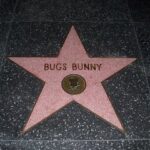If you take a look at the children’s PBS schedule, you may have noticed something—more cartoons and fewer live action television shows. Yes, if you were a child who grew up sometime during the late 20th century, you may have noticed that, for the most part, PBS children’s broadcasting probably looks quite a bit different than it did when you sat in front of that television decades ago. In this three-part article series, we will take a look back at some of the classic PBS children’s shows that aired since the 1960s and take a moment to remember what each show offered to its viewing audience.
As we look back at these essential PBS children’s shows, we have a striking realization—most of the television we watched in the day featured live human characters of creative puppets. Today, the bulk of PBS children’s programming schedules include computer-generated or cartoon shows. PBS still offers children an educational and enriching environment that is virtually unmatched by other networks, but gone are the golden days when the morning and afternoon PBS schedules included “live” lessons in science, math, English, and a plethora of morals and values that most every child needs to learn early on in their lives. Though a few of these classic programs continue to air in reruns (and PBS is still airing new, first-run episodes of Sesame Street), it is fair to say that the bulk of today’s youngsters will never see or even know of most of the shows this article series will include. With that said, let’s look back as these shows continue to live on in our memories and in our hearts. Part I of this series will look back at shows which originated in the 1960s and 1970s.
Electric Company (1971-1977) was the show to watch if your aim was to learn some of the basics of speaking, reading, and writing. Undoubtedly, Electric Company was one of PBS’ most exciting, hilarious, and fast-moving children’s programs ever aired, with a number of live-action and cartoon segments featuring a variety of energetic and comedic stars such as Mel Brooks, Joan Rivers, Gene Wilder, Rita Moreno, and Morgan Freeman. To date, there are few children’s shows that could compare to the entertainment and educational value of Electric Company.
Mister Rogers’ Neighborhood (1968-2001) was, by far, one of the most beloved, popular, and enriching children’s shows of all time. Fred Rogers, who was ordained a Presbyterian minister in 1963, hosted what could be considered as one of the most wholesome, well-rounded, and timeless children’s shows to have ever been produced. Rogers was famous for wearing a cardigan sweater on his program and composing a number of now-classic songs that have helped build confidence, self-awareness, and inspiration in millions of children over the decades. His show brought together a cast of human actors who played Rogers’ neighbors. While the neighborhood was populated with scores of actors (most of who were referred to by their real names in the show), perhaps the most famous of all of Rogers’ television neighbors was Mr. McFeeley (David Newell), the postman who would personally hand packages to Mr. Rogers with a smile and a lively saying of his unforgettable motto: “speedy delivery!”
Rogers took his viewers on many field trips to various destinations, such as an aquarium, a school, a swimming pool, and frequent stops by familiar locations right near Rogers’ television neighborhood home, including Chef Brockett’s (Don Brockett) bakery, and Joe Negri’s (himself) music shop. Special visitors made their way to the neighborhood many times over the years, including Yo-Yo Ma, Lou Ferrigno, Wynton Marsalis, Robert Keeshan (popularly known as Captain Kangaroo), and even Sesame Street’s Big Bird (Carroll Spinney) dropped in to say hello. Children have all sorts of memories of the show, but perhaps one of the most fanciful, lively, and endearing were the moment that occurred in the Neighborhood-of-Make-Believe. Childen were taken to this magical place where humans and puppets interacted when Mr. Rogers, after explaining what was happening in the neighborhood that day, brought the viewers to the realm via a little red trolley that ran on tracks connecting Mr. Roger’s house to the Neighborhood-of-Make-Believe. Once in the special neighborhood, the audience met such characters as King Friday XIII, Lady Elaine Fairchilde, Daniel Striped Tiger, X the Owl, Henrietta Pussycat, Cornflake S. Pecially, and several others.
In this world of commercialism, in-your-face stir and noise, complex computer graphics and sound effects, and the seeming impression that only through “flashiness” can a show grab a child’s attention, it is quite highly unlikely a show of the nature that Mister Rogers’ Neighborhood brought to children’s television will ever be produced again.
Polka Dot Door (1971-1993) was a live-action show in which two hosts invited young children to open the polka dot door and come inside to a house in which games, activities, and other interesting diversions entertained the young viewers. During the show, Polkaroo (a kangaroo covered in polka dots) would stop by and interact with the two hosts and the children on the other side of the television screen.
Sesame Street (1969 to date) is perhaps the classic PBS children’s television program of all time. A warm and special street in a New York City neighborhood, humans and Jim Henson’s famous Muppets come together to build a unique cast of colorful, friendly, educational characters who have, in a most entertaining fashion, have taught children lessons ranging from the learning the alphabet to coping with the passing of a loved one. Big Bird, Count von Count, Bert, Ernie, the Cookie Monster, Grover, Betty Lou, Guy Smiley, Elmo, and all the rest of Henson’s award winning cast of imaginative and world-known creatures live side-by-side with neighbors like Gordon (Roscoe Orman), Luis (Emilio Delgado), Maria (Sonia Manzano), Bob (Bob McGrath) and countless guest stars (the tip of the iceberg includes James Earl Jones, Burt Lancaster, Bill Cosby, Carol Burnett, Michael Landon, James Taylor).
Between the live segments, a number of cartoons, films, and song & dance skits would be played, many of them in keeping with the episode’s common theme or lesson (such as the number “7” or letter “A”). Sesame Street has brought to society many memorable songs, such as “Rubber Duckie,” “Put Down the Duckie,” “It’s Not Easy Being Green,” and the ever-fun and clever “Abcdefghijklmnopqrstuvwxyz” (which, when Big Bird famously sung it, was pronounced something like “ab-ka-de-fy-jek-l-muh-nop-kro-stuv-wex-ez”).
Sesame Street has withstood the test of time, the show now being able to boast that it has taught children and their children since the program first aired forty years.
The next installment of Classic PBS Children’s Television will look back at some popular, colorful, and exciting PBS children’s programs which first aired in the 1980s.
Resources:
“Electric Company.” Internet Movie Database. 14 September 2007. http://www.imdb.com/title/tt0066651/
“Mister Rogers’ Neighborhood.” Internet Movie Database. 16 September 2007. http://www.imdb.com/title/tt0062588/
“Polka Dot Door.” Internet Movie Database. 16 September 2007. http://www.imdb.com/title/tt0168367/
“Sesame Street.” Internet Movie Database. 16 September 2007. http://www.imdb.com/title/tt0063951/


